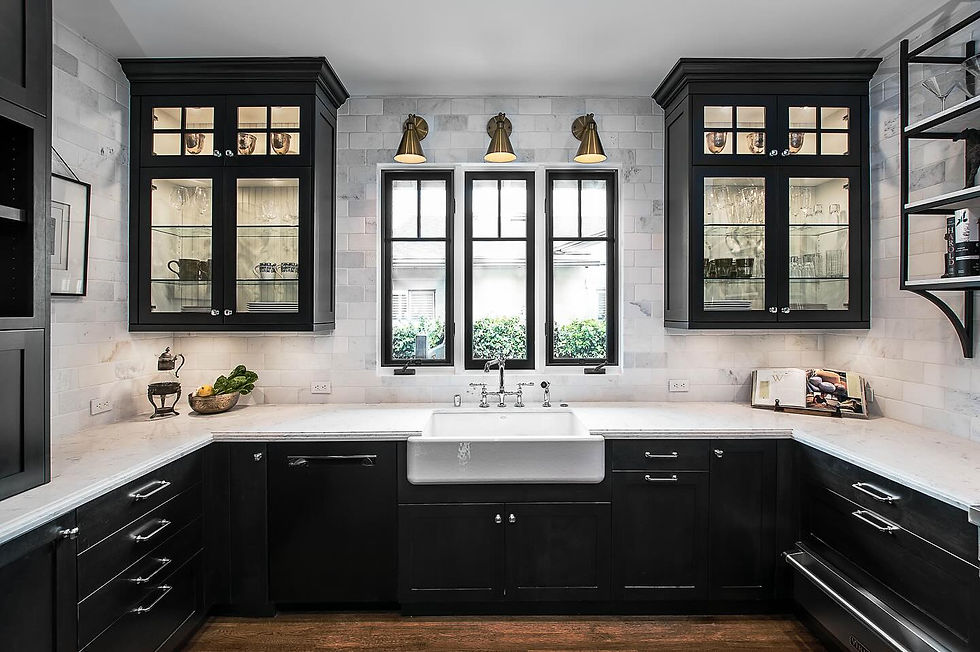There's No Code For Cosmetics
- Corbin Clay
- Jan 2, 2023
- 3 min read
Updated: Jan 25, 2023
The building code is there for a lot of good reasons, but not there for most of the things we see and use everyday.

Safety
The International Residential Code (IRC) is the official set of rules for building safety. Anyone tackling a construction project is legally required to follow these rules and they are enforced by local building inspectors. Most cities and municipalities will also layer on additional, more regionally-specific rules on top of the IRC. These rules include very important building details like rebar requirements in foundations, nailing patterns in framing, hurricane ties and strapping, and correct water-proofing for roofs; anything to make the building safe to occupy (and thereby qualifying you for your Certificate of Occupancy). Unfortunately, there are little to no requirements in the building code governing finish work. To name a few: drywall texture, paint, flooring installation and finishing, level and plumb cabinets, shower waterproofing and tile, and tight millwork joinery are not specifically covered in the code. Rather, they’re left up to the best practices (to the extent they exist) for that specific area of of the industry.
This can lead to a lot of problems with the misalignment of expectations between the homeowner, the builder, and his or her network of subcontractors. As we talked to about in the last post, we want to eliminate as much subjectivity from the process as early as possible. When someone says the baseboards and trim have been “done right” what exactly does that mean?
Industry Best Practices
Fortunately, there are a few organizations that establish our industry’s best practices. The National Kitchen and Bath Association (NKBA), for example, has a list of 31 essential kitchen design guidelines that cover everything from ergonomics, to safety, to general usability. The Architectural Woodwork Institute (AWI) also has standards for wood casework, trim carpentry, and materials. These are incredibly useful guidelines and by all means try and find those that use them. Unfortunately, they are just guidelines. They are not requirements.

Eliminate Subjectivity
At each step of the process, specifically those not covered by the building code, discussing how that builder handles each detail is something that needs to be agreed upon. This can sound like a daunting task, especially in new construction. Discussing each industry's specific best practices with one of our Experts is a great first step. Establishing parameters and expectations is the only way to agree on what has been done "right" and what has been done "wrong". We want to take as much subjectivity out of the process as possible.
Once established, confirm with your contractor at the outset what is and isn't acceptable upon completion of the project, as well as what is and isn't acceptable over time. Cabinet doors sometimes sag. Grout sometimes stains. Inside corners of baseboards sometimes crack. What should be expected on the day of completion? What should be expected one year later? What is the contractor's plan to warranty their work if those expectations are not met? Get this in writing and - it goes without saying - choose your contractor carefully.
You Want A Partnership
In addition to positive reviews, word-of-mouth, and projects of theirs that you've actually seen, I'd encourage you to judge your contractor's integrity as best you can. If you have to call this person 6 months later for a warranty issue, will they answer the phone and make it right? Do they have a solid reputation that they want to maintain? Asking for references and reading their Google reviews is a great place to start. Given the gaps in the building code regarding finish work, the quality of your final project ultimately comes down to the integrity and best practices of the contractor(s) you hired.
This is why it is so very important to look at the relationship between you and your contractor as that of a partnership. Throughout the process, you will have responsibilities (make decisions when needed, be reachable, pay on time, abide by the rules for change deadlines), as will they (stay on schedule, complete the work to the agreed upon standards, warranty that work, abide by the requirements of their contract). When both sides' expectations are aligned, the process can actually be very enjoyable.




